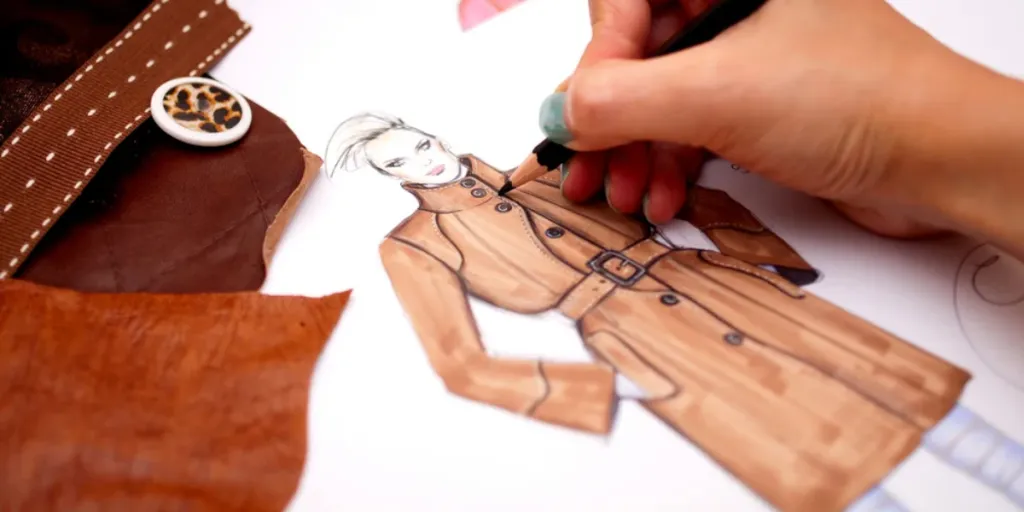Many fashion brands and retailers are trying to make their apparel sourcing operations more sustainable, from publishing ESG reports to using more recycled textile materials in their products. However, the effectiveness of fashion companies’ sustainability efforts and related communication remain largely unknown, especially among Generation Z, arguably their most important target market.
Dr Sheng Lu, associate professor of fashion and apparel studies at the University of Delaware quizzed his students about sustainable apparel sourcing to find out whether fashion sourcing managers’ decisions are aligned with what their target market wants.
He says: “Like many other Generation Z, our students already have a good sense of sustainability and recognise the issue’s significance and complexity. They also have high expectations for fashion brands and retailers regarding supply chain transparency, the use of more sustainable textile materials in their products, and genuinely communicating sustainability efforts instead of treating sustainability as a marketing issue.”
He highlights that his Generation Z students are the fashion industry’s future professionals and they are not afraid to make changes — from shifting away from ‘fast fashion’ culture, to calling for more sustainable sourcing-related regulations and embracing the idea of zero-waste design and circularity.
What sustainable apparel sourcing means to Gen Z
One of Lu’s students, Emilie Delaye, argues it’s difficult to define sustainable apparel sourcing today because the definition of the word sustainable is constantly evolving. She says that for her generation it is a phenomenon that is much larger than environmental issues with Gen Z consumers, including herself becoming more concerned with the “who” and “where” questions when it comes to sourcing.
For Cecilia Goetz, sustainable apparel sourcing means going about sourcing in an ethical way both environmentally and socially and often putting the financial interests of the company on the backburner in order to do so.
She points out this can mean a number of things, including a shift towards more local production (nearshoring), the implementation of labour regulations in factories, and the use of more eco-friendly materials. Plus, it requires companies to be entirely transparent with their efforts.
Hannah Laurits, agrees, adding that sustainability encompasses various elements that define responsible production and believes her generation actively seek products that align with as many sustainability parameters as possible and can validate their claims with reliable evidence.
But Miranda Rack and Hunter Wills are more interested in the specifics.
As Rack states: “We want to know which factories produced what, and especially who made our clothing. If a brand wants to source apparel more sustainably, the first step is to become more transparent.”
She continues: “It is the brand’s responsibility to be open and honest about where their products come from, not the consumer’s job to research every time they shop.”
Kendall Ludwig adds: “If a company does not disclose their efforts, it is valid to assume they have none. The more transparent, the better.”
Generation Z’s take on fashion purchasing decisions
All of Lu’s apparel-sourcing students state a fashion company’s sustainability ethos helps them choose what to buy.
Leah Marsh, suggests Gen Z consumers prioritise ethical and sustainable fashion and she conducts her own research to decide whether or not to support a specific brand: “It is really important to me for a company’s website, or an article of clothing’s tag to disclose as much information as possible. Key information that stands out to me as a conscious consumer is the country of origin, price, fibre content, and even the care instructions.”
Annabelle Brame agrees but admits: “Many of our brands are not transparent or know fully what is happening, where they are producing, so it is extremely difficult as consumers to buy into the right places correctly.”
She points out that the ways these unsustainable companies make their money is from mass amounts of consumption so by consuming less, it significantly begins to help the problem.
Wills finds it hard to justify buying anything new because there are so few brands making clothing with sustainable sourcing in mind at a price point he can afford. “This usually causes me to look online or thrift stores for second-hand clothing that I know will last,” he says.
Preferred sustainable materials and practices
Upcycling is also something that Gen Z has a keen interest in with Goetz admitting her Tik Tok “for you page” is often filled with crafty teenagers turning a worn-down pair of pants from Goodwill that they would never wear into a stylish two-piece set that can be worn in multiple ways.
Delaye highlights the biggest sustainable materials and practices for Gen Z are associated with the key terms “organic cotton” and “fair labour”. She says organic cotton is very popular among Gen Z, and one that fashion brands have quickly picked up on and highlighted in their practices. Similarly, she says fair labour is particularly prevalent in the more “woke” crowds of consumers, however, she feels it has started to penetrate mainstream discussion.
Ludwig is also a fan of organic cotton and notes that in the University of Delaware’s Sustainable Fashion Club, the “most popular activity by far is painting organic cotton tote bags”.
When looking at fabrics Laurits watches for green flags such as organic fibres, hemp, linen and bamboo. She explains that many of her peers are interested in recycled fibres, such as recycled cotton: “These fibres are enticing to my peers and me as they are much less harmful to the environment compared to other alternatives.”
Concerns over greenwashing
There are mixed views from the students when it comes to greenwashing. For example, Brame sees the issues with greenwashing everywhere she goes. She says bluntly: “Unfortunately, I don’t even believe it is fully the company’s fault. Companies themselves are just uneducated on the topic. We do not have enough professionals to guide a change and effectively communicate sustainability. Instead, we have incredible marketers who know how to influence consumers.”
Marsh takes the opposing view, stating: “Since sustainability and ethical fashion have become such a hot topic within the industry, I believe that fashion companies have been extremely successful in communicating their sustainability efforts to Gen Z.”
Wills says the sad truth and arguably the reason for the mixed views on the topic of greenwashing is that the majority of Gen Z do not know about the impacts of fast fashion and how much of an impact the fashion industry has on the environment.
He explains: “Brands want consumers to feel that they are helping, not hurting the world with their purchase and will go to great lengths to put on this façade.”
Rack agrees and sees greenwashing as just another way for brands to take advantage of consumers with Laurits adding: “Brands that genuinely pride themselves on being sustainable and prioritise sustainable practices, should convey their efforts without resorting to overt marketing tactics which may resemble greenwashing.”
Enhancing sustainable sourcing within the fashion supply chain
Delaye shares that one major role Gen Z individuals studying fashion merchandising and design can play in the industry is with legislation. She notes her generation is being educated on these intricate and delicate issues at hand: “With the education, we can provide a framework and legal structure that will define what classifies as being ‘sustainable,’ and that actively works against greenwashing.
Laurits is excited about the increasing presence of Generation Z in the workforce, because she says they are all so passionate about sustainability with Rack adding that students in the fashion field should be learning about sustainability in their classes and actively practicing sustainable fashion in their everyday lives.
Aside from the fact Gen Z will be the fashion sector’s future professionals, Goetz points out Gen Z is slowly becoming the largest consumer group in the US. As a result, she says “we can play a major role in changing the trajectory of sustainability in the apparel industry”.
Plus, she says Gen Z’s strong social media presence gives the cohort a type of influence that generations in the past didn’t have.
However, the dilemma as far as Ludwig is concerned is that Generation Z is the most environmentally conscious, but at the same time, buys the most fast fashion products. She argues that for this reason Gen Z consumers have the ability to make change through financial means: “As the target market for the biggest fast fashion companies, a generation-wide boycott to demand better sustainable sourcing practices would force companies to listen to stay in business.”
Sustainable apparel sourcing education for young consumers and professionals
Education and awareness are key to improving sustainable apparel sourcing in future, says Wills with Marsh adding that industry standards also play a vital role.
“Every new sustainable term has a handful of different definitions floating around that ultimately confuse consumers and professionals. There needs to be a standard developed, just like for any other area of study or focus. Consumers need to have something accurate to refer to when they need help making important decisions,” she says.
Rack highlights that yes it is up to brands to be honest with consumers about their apparel sourcing, but “it is up to consumers to care” so she argues “Generation Z must keep fighting to hold brands accountable”.
Many of the students cite social media as being a real positive for Generation Z as it gives them a platform to share what’s happening within the sustainable apparel sourcing space.
Delaye is keen to note: “Social media and media, in general, have taken over many individuals’ lives today, however, it is known that not all information is true. I think that educating individuals on how to successfully identify whether a source is credible will help reduce the spread of mass misinformation.”
She adds: “This, along with the development of critical thinking skills, will ensure that each consumer and professional can create their own opinions on a topic at hand, which in turn will allow our society as a whole to come up with more collaborative and informed decisions on how to tackle the issues we face.”
Lu concludes: “I strongly encourage visionary fashion companies to continue partnering with our educational institutions and investing in our Generation Z students. High-quality sustainability-related sourcing education will undoubtedly play a vital role in preparing the next generation of future professionals ready to make positive changes.”
Source from Just-style.com
Disclaimer: The information set forth above is provided by Just-style.com independently of Alibaba.com. Alibaba.com makes no representation and warranties as to the quality and reliability of the seller and products.




